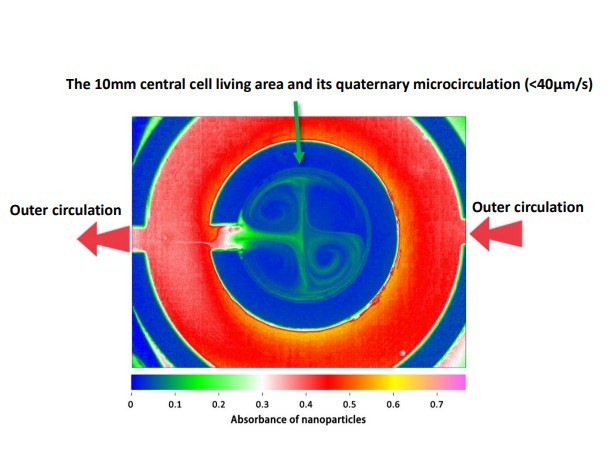The microfluidic Petri dish consists of a Petri dish with microfluidic channels and a magnetic O-pump in the Petri dish. In the center of the microfluidic dish there is a cell living area with a diameter of 10 mm. Driven by the outer circulation (total volume 1ml), a quaternary ultra-slow microcirculation (maximum flow rate of 40 μm/s, half-life of the central cell living area is about 24 min) is generated in the central cell living area. Because the microcirculation in the central cell living area can be programmed, microfluidic dishes can grow very sensitive cells or organoids in flow and perform complex experiments on these cells or organoids. Quaternary ultra-slow microcirculation can directly bring the molecules in the outer circulation to the interior of the central cell living area, avoiding the diffusion gradient from hindering drug delivery.
[Inside Back Cover] Stem Cell Nests: Design Artificial Stem Cell Nests for Stem Cell Niche in a Microfluidic Petri Dish Programmed by a Cell Phone (Adv. Mater. Technol. 6/2021). https://doi.org/10.1002/admt.202170035
[Research Article] Design Artificial Stem Cell Nests for Stem Cell Niche in a Microfluidic Petri Dish Programmed by a Cell Phone.
https://doi.org/10.1002/admt.202100045

